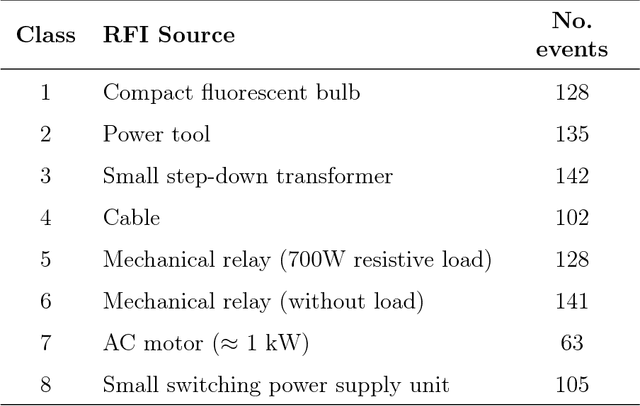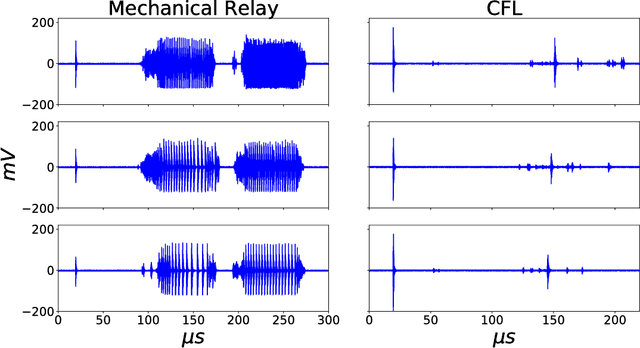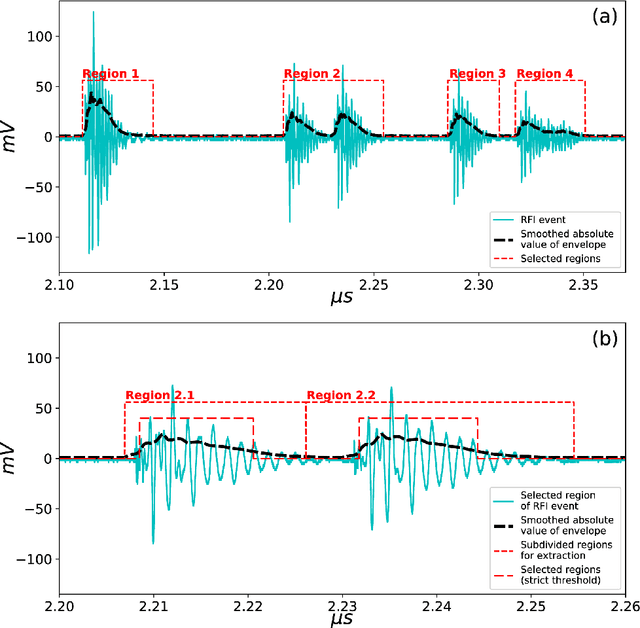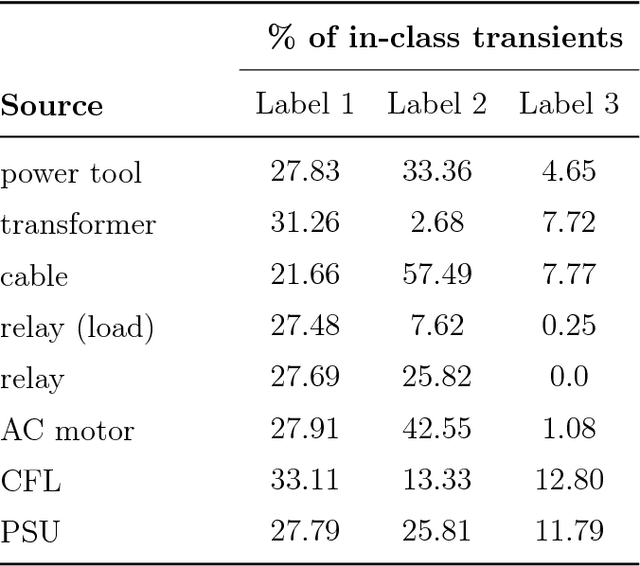Michael Inggs
A Dictionary Approach to Identifying Transient RFI
Nov 23, 2017



Abstract:As radio telescopes become more sensitive, the damaging effects of radio frequency interference (RFI) become more apparent. Near radio telescope arrays, RFI sources are often easily removed or replaced; the challenge lies in identifying them. Transient (impulsive) RFI is particularly difficult to identify. We propose a novel dictionary-based approach to transient RFI identification. RFI events are treated as sequences of sub-events, drawn from particular labelled classes. We demonstrate an automated method of extracting and labelling sub-events using a dataset of transient RFI. A dictionary of labels may be used in conjunction with hidden Markov models to identify the sources of RFI events reliably. We attain improved classification accuracy over traditional approaches such as SVMs or a na\"ive kNN classifier. Finally, we investigate why transient RFI is difficult to classify. We show that cluster separation in the principal components domain is influenced by the mains supply phase for certain sources.
Design of OFDM radar pulses using genetic algorithm based techniques
Jun 19, 2015



Abstract:The merit of evolutionary algorithms (EA) to solve convex optimization problems is widely acknowledged. In this paper, a genetic algorithm (GA) optimization based waveform design framework is used to improve the features of radar pulses relying on the orthogonal frequency division multiplexing (OFDM) structure. Our optimization techniques focus on finding optimal phase code sequences for the OFDM signal. Several optimality criteria are used since we consider two different radar processing solutions which call either for single or multiple-objective optimizations. When minimization of the so-called peak-to-mean envelope power ratio (PMEPR) single-objective is tackled, we compare our findings with existing methods and emphasize on the merit of our approach. In the scope of the two-objective optimization, we first address PMEPR and peak-to-sidelobe level ratio (PSLR) and show that our approach based on the non-dominated sorting genetic algorithm-II (NSGA-II) provides design solutions with noticeable improvements as opposed to random sets of phase codes. We then look at another case of interest where the objective functions are two measures of the sidelobe level, namely PSLR and the integrated-sidelobe level ratio (ISLR) and propose to modify the NSGA-II to include a constrain on the PMEPR instead. In the last part, we illustrate via a case study how our encoding solution makes it possible to minimize the single objective PMEPR while enabling a target detection enhancement strategy, when the SNR metric would be chosen for the detection framework.
 Add to Chrome
Add to Chrome Add to Firefox
Add to Firefox Add to Edge
Add to Edge